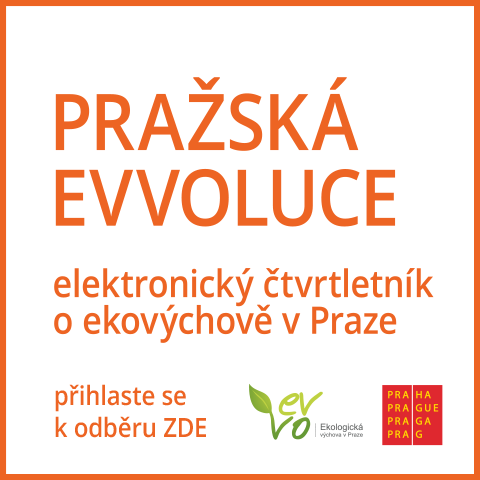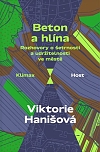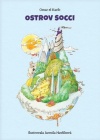Tiskové zprávy
EHK OSN: Protokol o ochraně ovzduší vstupuje 17. května v účinnost
The Protocol to Abate Acidification, Eutrophication and Ground-level Ozone to the Convention on Long-range Transboundary Air Pollution of the United Nations Economic Commission for Europe (UNECE) will enter into force on Tuesday, 17 May 2005. It has so far been ratified by: the Czech Republic, Denmark, Finland, Germany, Latvia, Lithuania, Luxembourg, the Netherlands, Norway, Portugal, Romania, Slovakia, Slovenia, Spain, Sweden, the United States and the European Community.
The Protocol aims to cut emissions of sulphur, nitrogen oxides, volatile organic compounds (VOCs) and ammonia from energy generation, industrial sources, motor vehicles, agriculture and products.
Acidification, eutrophication and ground-level ozone continue to destroy our environment and to harm our health. For instance, acidification affects fish populations and forest soils in Europe and North America and causes corrosion of buildings and monuments. In sensitive areas, high nitrogen deposition results in eutrophication. Some plant species grow excessively and others disappear. In coastal and inland waters, blooms of - often toxic - algae deplete oxygen, harming plants, fish and other life forms. Industrial and motor vehicle emissions and the use of certain products (e.g. solvents and paints) cause ground-level ozone (‘summer smog’). Ground-level ozone damages lung function, particularly in children and asthmatics. Ozone also causes leaf injury in plants, including crops and trees, and causes mainly organic materials like paint or rubber to disintegrate. Finally, cutting the pollutants targeted by the Protocol will also significantly lower concentrations of particles, which cause severe respiratory problems.
The Protocol sets reduction targets for all four pollutants. By 2010, Europe’s sulphur emissions should be cut by 63%, its NOx emissions by 41%, its VOC emissions by 40% and its ammonia emissions by 17% compared to their 1990 levels. Each country’s individual ceilings depend (a) on the impact that its emissions have on public health and (b) on the vulnerability of the environment that they pollute. Countries whose emissions have the most severe health or environmental impact and whose emissions are the cheapest to reduce will have to make the biggest cuts.
The Protocol also sets limit values for specific emission sources (e.g. combustion plant, electricity production, dry cleaning, cars and lorries) and requires best available techniques to be used to keep emissions down. VOC emissions from such products as paints or aerosols will also have to be cut. Finally, farmers will have to control ammonia emissions (manure, artificial fertilizer).
Calculations made during the Protocol’s negotiations showed that, once all the targets are met, the area in Europe with excessive levels of acidification will shrink from 93 million hectares in 1990 to 15 million hectares in 2010. That with excessive levels of eutrophication will fall from 165 million hectares in 1990 to 108 million hectares in 2010. The number of days with excessive ozone levels will be halved. Consequently, it is estimated that life-years lost as a result of the chronic effects of ozone exposure will be about 2,300,000 lower in 2010 than in 1990, and there will be approximately 47,500 fewer premature deaths resulting from ozone and particulate matter in the air. The exposure of vegetation to excessive ozone levels will be 44% down on 1990.
Furthermore, an analysis carried out during the Protocol’s negotiations showed that its expected benefits (healthier population, higher agricultural productivity, less damage to buildings, etc.) far outweigh its estimated costs (e.g. end-of-pipe control or energy-efficiency measures) – probably by a factor of 3 or more.
The first meeting of the Parties to the Protocol will take place in December 2005. The Parties will include Slovakia. It recently ratified the Protocol, which will enter into force for it in July.
The Protocol is available in English, French and Russian on the UNECE website: http://www.unece.org/env/lrtap/multi_h1.htm
The Protocol aims to cut emissions of sulphur, nitrogen oxides, volatile organic compounds (VOCs) and ammonia from energy generation, industrial sources, motor vehicles, agriculture and products.
Acidification, eutrophication and ground-level ozone continue to destroy our environment and to harm our health. For instance, acidification affects fish populations and forest soils in Europe and North America and causes corrosion of buildings and monuments. In sensitive areas, high nitrogen deposition results in eutrophication. Some plant species grow excessively and others disappear. In coastal and inland waters, blooms of - often toxic - algae deplete oxygen, harming plants, fish and other life forms. Industrial and motor vehicle emissions and the use of certain products (e.g. solvents and paints) cause ground-level ozone (‘summer smog’). Ground-level ozone damages lung function, particularly in children and asthmatics. Ozone also causes leaf injury in plants, including crops and trees, and causes mainly organic materials like paint or rubber to disintegrate. Finally, cutting the pollutants targeted by the Protocol will also significantly lower concentrations of particles, which cause severe respiratory problems.
The Protocol sets reduction targets for all four pollutants. By 2010, Europe’s sulphur emissions should be cut by 63%, its NOx emissions by 41%, its VOC emissions by 40% and its ammonia emissions by 17% compared to their 1990 levels. Each country’s individual ceilings depend (a) on the impact that its emissions have on public health and (b) on the vulnerability of the environment that they pollute. Countries whose emissions have the most severe health or environmental impact and whose emissions are the cheapest to reduce will have to make the biggest cuts.
The Protocol also sets limit values for specific emission sources (e.g. combustion plant, electricity production, dry cleaning, cars and lorries) and requires best available techniques to be used to keep emissions down. VOC emissions from such products as paints or aerosols will also have to be cut. Finally, farmers will have to control ammonia emissions (manure, artificial fertilizer).
Calculations made during the Protocol’s negotiations showed that, once all the targets are met, the area in Europe with excessive levels of acidification will shrink from 93 million hectares in 1990 to 15 million hectares in 2010. That with excessive levels of eutrophication will fall from 165 million hectares in 1990 to 108 million hectares in 2010. The number of days with excessive ozone levels will be halved. Consequently, it is estimated that life-years lost as a result of the chronic effects of ozone exposure will be about 2,300,000 lower in 2010 than in 1990, and there will be approximately 47,500 fewer premature deaths resulting from ozone and particulate matter in the air. The exposure of vegetation to excessive ozone levels will be 44% down on 1990.
Furthermore, an analysis carried out during the Protocol’s negotiations showed that its expected benefits (healthier population, higher agricultural productivity, less damage to buildings, etc.) far outweigh its estimated costs (e.g. end-of-pipe control or energy-efficiency measures) – probably by a factor of 3 or more.
The first meeting of the Parties to the Protocol will take place in December 2005. The Parties will include Slovakia. It recently ratified the Protocol, which will enter into force for it in July.
The Protocol is available in English, French and Russian on the UNECE website: http://www.unece.org/env/lrtap/multi_h1.htm
Online diskuse
Redakce Ekolistu vítá čtenářské názory, komentáře a postřehy. Tím, že zde publikujete svůj příspěvek, se ale zároveň zavazujete dodržovat pravidla diskuse. V případě porušení si redakce vyhrazuje právo smazat diskusní příspěvěk




